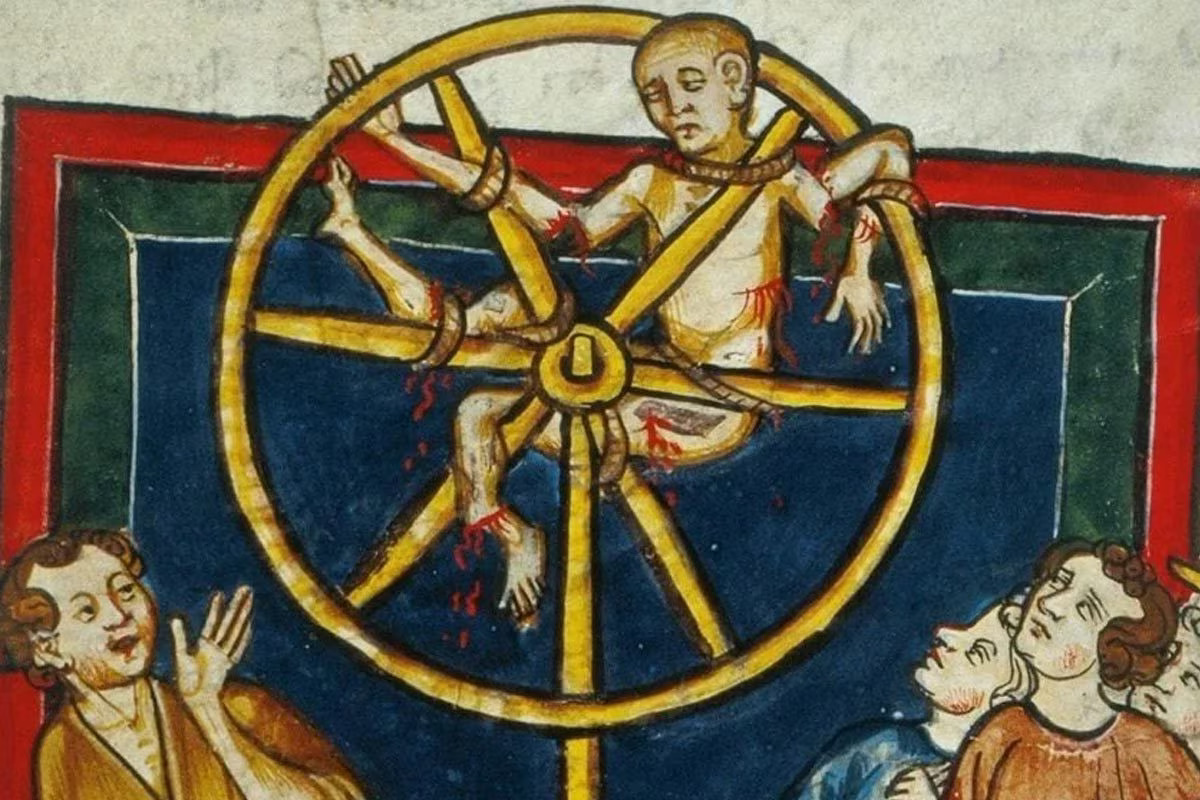
Ever wondered about the gruesome history behind the Breaking Wheel? This medieval torture device, also known as the Catherine Wheel, was used to execute criminals in a brutal manner. Originating in ancient Greece and Rome, it became infamous during the Middle Ages. Victims were tied to a large wooden wheel and their limbs shattered with a heavy iron bar. The broken bodies were then left on display as a grim warning to others. This method of execution was not only painful but also served as a public spectacle. Intrigued by the dark past of the Breaking Wheel? Keep reading to uncover 37 chilling facts about this notorious instrument of death.
The Breaking Wheel: A Brutal Form of Execution
The breaking wheel, also known as the Catherine wheel, was a gruesome method of execution used in Europe during the Middle Ages. It was designed to inflict maximum pain and suffering on the condemned. Here are some chilling facts about this brutal device.
-
The breaking wheel was named after Saint Catherine of Alexandria, who was sentenced to be executed on a spiked wheel.
-
This method of execution was primarily used in France and Germany but also saw use in other parts of Europe.
-
The condemned person was tied to a large wooden wheel, which was then spun slowly.
-
Executioners used heavy iron bars to break the bones of the person tied to the wheel.
-
The breaking wheel was often used for crimes considered particularly heinous, such as murder or treason.
The Process of Execution
The process of execution by the breaking wheel was designed to be as torturous as possible. Here are some details about how it was carried out.
-
The condemned was usually stripped naked before being tied to the wheel.
-
The wheel was often placed on a scaffold or a raised platform for public viewing.
-
Executioners would start by breaking the legs and arms of the condemned.
-
After the limbs were broken, the executioner would move on to the ribs and spine.
-
The goal was to keep the person alive and conscious for as long as possible.
Variations of the Breaking Wheel
Different regions had their own variations of the breaking wheel, each with unique features. Here are some of them.
-
In some cases, the wheel was equipped with spikes or blades to increase the suffering.
-
In other instances, the wheel was turned horizontally, and the condemned was tied to it in a spread-eagle position.
-
Some versions of the wheel had the condemned tied to the outside, while others had them tied to the inside.
-
In certain regions, the condemned was given a "merciful" death blow after enduring a certain amount of torture.
-
The breaking wheel was sometimes used in conjunction with other forms of torture, such as burning or flaying.
Historical Cases and Notable Victims
Several historical cases and notable victims of the breaking wheel have been recorded. Here are a few examples.
-
Peter Niers, a notorious German bandit and serial killer, was executed on the breaking wheel in 1581.
-
In 1738, a Frenchman named Robert-François Damiens was executed on the breaking wheel for attempting to assassinate King Louis XV.
-
The breaking wheel was used to execute the infamous pirate Klaus Störtebeker in 1401.
-
In 1757, a Frenchman named François-Jean de la Barre was executed on the breaking wheel for blasphemy.
-
The breaking wheel was used to execute the Swedish nobleman Jacob Johan Anckarström for the assassination of King Gustav III in 1792.
The Decline and Abolition of the Breaking Wheel
The use of the breaking wheel eventually declined and was abolished in most countries. Here are some reasons for its decline.
-
The Enlightenment brought about a shift in attitudes towards punishment and torture.
-
Many countries began to adopt more humane methods of execution, such as the guillotine.
-
Public opinion turned against the use of such brutal methods of execution.
-
The breaking wheel was officially abolished in France in 1789, during the French Revolution.
-
Germany abolished the use of the breaking wheel in the early 19th century.
Cultural Impact and Legacy
The breaking wheel has left a lasting impact on culture and history. Here are some ways it has been remembered.
-
The breaking wheel is often depicted in medieval art and literature.
-
Saint Catherine of Alexandria, who was sentenced to be executed on a spiked wheel, became a symbol of martyrdom.
-
The term "Catherine wheel" is still used today to refer to a type of firework that spins as it burns.
-
The breaking wheel has been referenced in various films, books, and television shows.
-
The gruesome nature of the breaking wheel has made it a symbol of the brutality of medieval justice.
Modern References and Symbolism
Even today, the breaking wheel continues to be referenced and symbolizes various concepts. Here are some modern references.
-
The breaking wheel is often used as a metaphor for extreme suffering or punishment.
-
Some historical reenactments and museums include replicas of the breaking wheel to educate the public about medieval torture methods.
-
The breaking wheel has been featured in video games and other forms of popular media.
-
The image of the breaking wheel is sometimes used in political cartoons to criticize harsh or unjust punishments.
-
The breaking wheel serves as a reminder of the importance of human rights and the need to prevent such brutal practices.
Interesting Tidbits
Here are a few more interesting tidbits about the breaking wheel that you might find fascinating.
-
The breaking wheel was sometimes used as a form of execution for animals, particularly those that had killed humans.
-
In some cases, the condemned person was given the opportunity to confess their sins and seek forgiveness before being executed on the wheel.
Final Thoughts on the Breaking Wheel
The breaking wheel was a brutal method of execution used in Europe for centuries. It involved tying a person to a large wheel and then breaking their bones with a heavy object. This punishment was not only meant to kill but also to serve as a public spectacle, deterring others from committing crimes. The wheel's use declined as societies moved towards more humane forms of justice. Today, it stands as a grim reminder of the past's harsh penalties. Understanding such historical practices helps us appreciate the progress made in human rights and justice. While the breaking wheel is no longer in use, its legacy lives on in historical records and serves as a stark contrast to modern legal systems. Reflecting on these facts, we can see how far we've come in our pursuit of justice and human dignity.
Was this page helpful?
Our commitment to delivering trustworthy and engaging content is at the heart of what we do. Each fact on our site is contributed by real users like you, bringing a wealth of diverse insights and information. To ensure the highest standards of accuracy and reliability, our dedicated editors meticulously review each submission. This process guarantees that the facts we share are not only fascinating but also credible. Trust in our commitment to quality and authenticity as you explore and learn with us.


